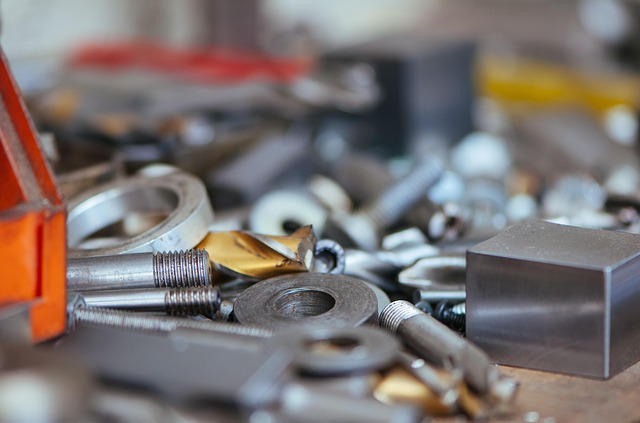Bumper Damage Repair: When Structural Reinforcement Is Key
Bumper damage repair addresses issues ranging from minor dents to structural problems caused by coll…….
In today’s fast-paced automotive landscape, the humble bumper has evolved from a simple protective barrier to a multifaceted component that plays a crucial role in vehicle safety, aesthetics, and repair economics. This article delves into the intricate world of bumper damage repair, exploring its various facets, global impact, economic implications, technological innovations, regulatory frameworks, and future prospects. By examining these elements, we aim to equip readers with a comprehensive understanding of why bumper damage repair is not just a mechanical fix but a strategic imperative in the automotive industry.
Bumper Damage Repair refers to the process of restoring or replacing damaged bumpers on vehicles, ensuring their structural integrity, safety functionality, and aesthetic appeal. The bumper, situated at the front and rear of a vehicle, serves as a crucial impact absorber during collisions, minimizing damage to the car’s body and its occupants.
The core components of a bumper system include:
Historically, bumper repair has been a relatively straightforward process involving simple dent removal or replacement of damaged parts. However, with evolving vehicle designs, advanced materials, and safety standards, the scope of bumper damage repair has expanded significantly. Today, it encompasses both traditional repairs and complex, computer-aided restoration techniques to match original specifications precisely.
Bumper damage repair is a global phenomenon, yet its implementation varies across regions due to differences in vehicle ownership rates, climate conditions, and regulatory frameworks. Here’s an overview:
| Region | Vehicle Ownership Rate (2022 Est.) | Climate Conditions | Regulatory Environment | Bumper Repair Trends |
|---|---|---|---|---|
| North America | High (approx. 85% per capita) | Diverse, with cold winters and warm summers | Strict safety standards, encouraging advanced bumper systems | Focus on precision repairs, utilizing robotic welding and computer-aided design |
| Europe | Moderate to high (varying by country) | Varies from temperate to continental climates | Stringent environmental and safety regulations | Emphasis on eco-friendly materials and recycling in bumper replacements |
| Asia Pacific | Rapidly growing (over 150 cars per 1000 people in some countries) | Tropical to temperate | Regulatory differences, with some regions adopting global standards | Increasing adoption of composite bumpers due to light weighting and cost-effectiveness |
| Middle East & Africa | Moderate but growing | Hot and arid climates | Evolving regulations aligning with global standards | Growing demand for durable, heat-resistant bumper systems |
These regional variations highlight the dynamic nature of bumper damage repair, influenced by economic, environmental, and safety considerations. As vehicle technology advances, global trends are converging towards more sophisticated, safe, and sustainable bumper solutions.
The bumper damage repair market is a significant segment within the broader automotive aftermarket industry, valued at approximately $XX billion in 2022, with projected annual growth of Y% through 2030. This growth is driven by several economic factors:
Market Segmentation:
The market can be segmented based on:
Investment Patterns:
The market attracts significant investment from both traditional automotive aftermarket players and new entrants focusing on advanced repair technologies. Key areas of investment include:
Technological innovations have transformed bumper damage repair, enabling faster, more precise, and environmentally friendly restoration processes. Some notable advancements include:
Regulatory frameworks play a pivotal role in shaping the bumper damage repair industry, ensuring safety standards, environmental compliance, and consumer protection. Key considerations include:
Despite its significance, the bumper damage repair industry faces several challenges and criticisms that require thoughtful solutions:
Strategic Solutions:
To address these challenges:
Volkswagen Group implemented a comprehensive bumper repair program with a focus on sustainability. They developed advanced computer-aided repair systems that can precisely restore damaged bumpers, minimizing material waste. The initiative promotes the reuse of components, reducing the demand for new parts and lowering environmental impact. This strategy has been well-received by customers seeking cost-effective and eco-friendly repairs.
Key Takeaways:
Tesla has incorporated advanced bumper systems into its vehicles, designed to withstand the demands of autonomous driving and collision testing. These bumpers feature composite materials and innovative energy absorption strategies, enhancing vehicle safety and performance. The company’s focus on in-house design and manufacturing allows for rapid iteration and integration of new technologies.
Lessons Learned:
In regions frequently affected by natural disasters like hurricanes or earthquakes, efficient bumper repair processes are critical for quick vehicle recovery. Mobile repair units equipped with portable tools and trained personnel have been deployed to provide immediate services, ensuring residents can quickly get back on the road. This case highlights the importance of accessible, swift repair solutions in challenging environments.
Key Insights:
The future of bumper damage repair is poised for significant growth, driven by technological advancements, shifting consumer preferences, and evolving regulatory landscapes. Here’s a glimpse into the horizon:
Bumper damage repair is not merely a routine automotive service; it is a dynamic field that reflects the broader trends in vehicle technology, safety standards, and consumer expectations. As we’ve explored, this industry is shaped by global influences, economic drivers, technological innovations, and regulatory frameworks. By embracing these factors, businesses can navigate the challenges and capitalize on opportunities to deliver high-quality, efficient, and sustainable bumper repair solutions.
The future of bumper damage repair holds immense potential for growth and transformation. With ongoing advancements in technology and an increasingly environmentally conscious society, the industry is poised to revolutionize vehicle maintenance practices, ensuring safer, more sustainable, and personalized driving experiences worldwide.
Q1: How do I know if my bumper needs professional repair or can be fixed at home?
A: Minor dents or scratches may be suitable for DIY repair using dent removal kits. However, significant damage, crumpling, or misalignment of the bumper requires professional assessment and repair to ensure structural integrity and safety.
Q2: Are there any eco-friendly options for bumper repairs?
A: Yes, many modern bumpers are designed with sustainability in mind, using materials like recycled plastics and bio-based composites. Additionally, proper recycling practices can minimize environmental impact during both manufacturing and repair processes.
Q3: How can I find a reputable bumper repair service near me?
A: Online reviews, local automotive forums, and recommendations from trusted mechanics are excellent resources for locating reputable repair shops. Look for facilities with certified technicians, advanced equipment, and a proven track record of quality work.
Q4: Will my car’s warranty cover bumper damage repairs?
A: Warranty coverage varies by manufacturer. Some warranties may include bumper damage as part of their terms, while others might not. Always refer to your vehicle’s owner manual or contact your dealer for specific warranty details regarding bumper repairs.
Q5: How long does a typical bumper repair take, and what costs are involved?
A: Repair times can vary from a few hours for simple dent removal to several days for complex damage or custom designs. Costs depend on the extent of repair, material choices, and local labor rates. It’s advisable to obtain quotes from multiple repair facilities for comparison.

Bumper damage repair addresses issues ranging from minor dents to structural problems caused by coll…….

Bumper damage repair addresses various cosmetic and structural issues caused by incidents like curb…….

Bumper damage repair addresses a spectrum of issues from minor dents to structural damage, focusing…….

Bumper damage repair involves a meticulous process prioritizing original equipment (OEM) parts and p…….

Bumper damage ranges from minor scratches to severe deformities, requiring a multi-step repair proce…….

Bumper damage repair is vital as even small defects can signal larger structural issues. Prompt acti…….

Bumper damage repair is a meticulous process that involves assessing and repairing various types of…….

Bumper damage, caused by collisions, debris, or weather, ranges from minor scuffs to severe cracks a…….